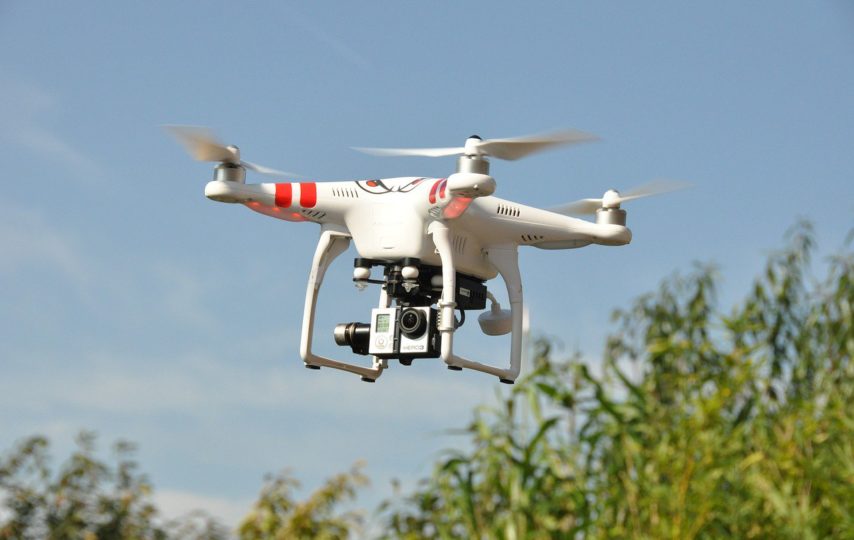The introduction of drones in search and rescue operations has revolutionized for all times the approach to crises and rescue victims. Search teams tend to turn to unmanned aerial vehicles – as these have been helpful in aerial surveillance and the technological progress will make them superfluous. This blog analyzes the considerable impact of drones for search and rescue operations in terms of their capacities and wide implementation.
The Evolving Role of Drones in Search & Rescue
Historically, search and rescue operations involved land crews to provide extensive coverage in locating missing individuals. But drones have arisen as game changers due to the benefits and coverage it brings.
Improved Surveillance
One of the significant benefits that drones have in their search and rescue operations is the ability to provide greater aerial surveillance. Drones equipped with thermal imaging, and high-resolution cameras can scout larger areas in less time tracing heat signatures and getting detailed photography —even under conditions like thick forests or after dark hours.
Swift Deployment
Unlike manned aircraft, drones can be rapidly deployed to the scene of an emergency. This swift response time is critical in situations where every second counts. Drones can take off from virtually anywhere, providing immediate eyes in the sky to assess the situation and plan rescue efforts accordingly.
Cost-Effective Solutions
Drones also offer a cost-effective alternative to traditional search and rescue methods. Operating a drone is significantly more affordable than maintaining a helicopter fleet. This cost savings allows organizations to allocate resources to the other crucial aspects of their operations, such as training and equipment.
Precision and Safety
With their precise maneuverability and agility, drones can navigate through the tight spaces and fly at low altitudes, reducing the risks associated with traditional aerial searches. This level of precision ensures that search and rescue teams can locate individuals quickly and safely.
Success Stories
The impact of drones on search and rescue operations will surely be vast and can be greatly understood by looking at real life success stories. It has proved in several cases that drones have been effective in saving lives.
One of the mountain rescue operations involved a lost hiker trekking in harsh terrain. The use of a drone allowed for the successful location within a few hours which was very crucial considering the dangers of the ravines. Despite darkness having set in, the heat signature of the hiker was detected by thermal imaging radar carried aboard UAV enabling an evasive rescue mission.
Challenges and Limitations
The effectiveness of drones towards search and rescue is arguably the reason that makes them precious tools, but still they have challenges and limitations.
Weather Conditions
Adverse weather conditions can hamper drone operations. Strong winds, heavy rain, or thick fog can make it unsafe for drones to operate, limiting their effectiveness in certain situations. Despite these challenges, advancements in drone technology continue to improve their resilience in adverse weather.
Battery Life
Endurance capacity of most drone units is relatively low, which seriously hinders its capability as a part and parcel to draw out search mission frameworks. For this reason, organizations keep more drones and charge them when necessary during the operations.
Regulatory Framework
Operating drones for search and rescue purposes requires adherence to a regulatory framework that ensures safety and compliance with airspace regulations. Organizations and first responders must navigate these regulations to conduct operations legally and responsibly.
Future Developments
The future of drones in search and rescue looks promising, with ongoing developments that promise to further enhance their capabilities.
Autonomous Navigation
Researchers are working on implementing autonomous navigation systems in search and rescue drones. This technology would enable drones to operate independently, making decisions based on the real-time data and optimizing their search patterns.
Improved Battery Technology
Advancements in battery technology are extending drone flight times. Longer endurance will enable drones to cover even larger areas without the need for frequent recharging, making them even more efficient in search and rescue missions.
Collaborating with AI
Another encouraging development is the incorporation of AI algorithms into drone systems. Real-time data analysis from drone sensors can be done by AI, which can spot patterns and abnormalities that a human might miss. This technology has the potential to greatly increase the precision and speed of missing person searches.
Conclusion
There is no doubt that drones have revolutionized search and rescue operations, bringing better aerial surveillance, quick deployment timeframes, affordable solutions and accuracy protection. Many success stories show the impact this unmanned savior has created and the number of lives it has saved.
Though weather challenges, the unreliable battery life in existing drones and some regulatory impediments remain daunting issues to contend with, further advancements seem set to cover them successfully. With the technological advancements in autonomous navigation, improved batteries technologies and artificial intelligence integration future drone technology adoption is expected to increase compensating for their continued importance of life-saving tools.








